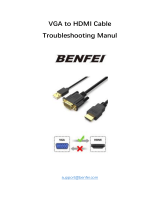
3
Table of Contents
Copyright ......................................................................................................................................2
Disclaimer .....................................................................................................................................2
Display installation guide ...........................................................................................................5
Precautions .................................................................................................................................................. 5
Notes on moving the display ................................................................................................................... 5
Notes on installing the display................................................................................................................. 7
Notes on using the remote control....................................................................................................... 8
Cable extension guide .............................................................................................................................10
Video wall installation guide ...................................................................................................21
Precautions ................................................................................................................................................ 21
Notes on moving the display ................................................................................................................. 21
Installing ...................................................................................................................................................... 21
Installing edge finishing kit: PL460/PH460/PH550/PL550 ................................................................25
Making a daisy chain .................................................................................................................................27
Different types of daisy chain ................................................................................................................ 29
Operating Instructions of Edge Alignment Kit/Pin: PL490/PL552/PL553/PH5501/PH5502 ....40
Tiling: PL490/PL552/PL553/PH5501/PH5502 .....................................................................................44
Operating Instructions of Edge Alignment Kit/Pin: PL4901/PL5501/PL5502.............................. 45
Tiling: PL4901/PL5501/PL5502 ..............................................................................................................46
Special signage installation guide ............................................................................................48
D series Full HD 55-inch dual-side display......................................................................................... 48
Mounting installation ................................................................................................................51
Ceiling Mount............................................................................................................................................ 51
Notice ......................................................................................................................................................... 54
U-Mount .....................................................................................................................................................56
H-mount .....................................................................................................................................................60
Digital Signage Bar-Type Series ..............................................................................................61
Installation notice ..................................................................................................................................... 61
Adjusting the OSD setting: For BH280/BH281/BH380................................................................... 61
BH series HDMI connetion (EXCEPT BH280/BH281/BH380) .....................................................62
Digital Signage Rotation/Portrait Guide ...............................................................................64
Troubleshooting ........................................................................................................................65
Connections............................................................................................................................................... 65
Picture/video .............................................................................................................................................68
Audio........................................................................................................................................................... 71
Remote control......................................................................................................................................... 71
Touch function (selected models only) ...............................................................................................72
OSD menu/control panel/power button ............................................................................................75
LED indicators........................................................................................................................................... 77




















